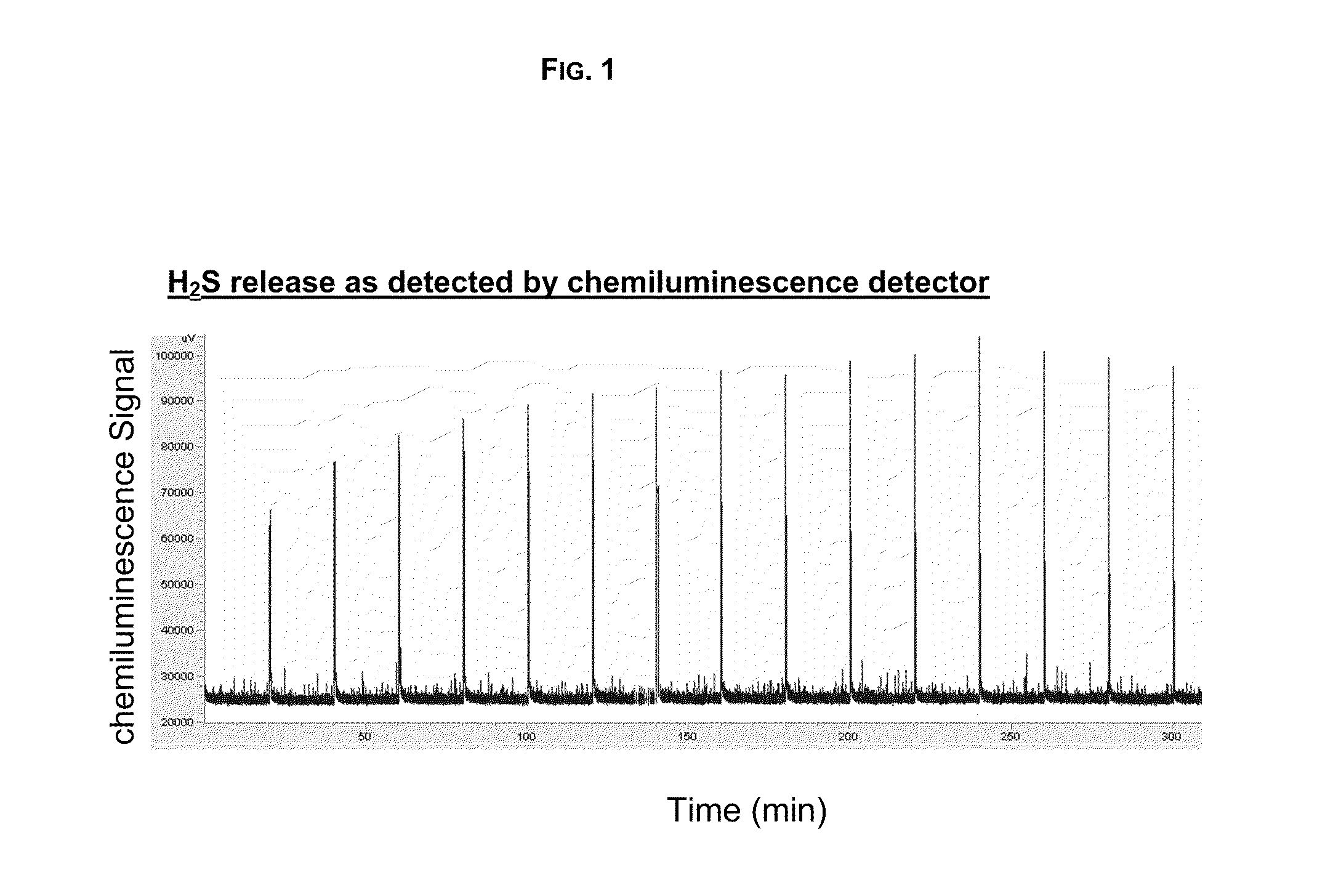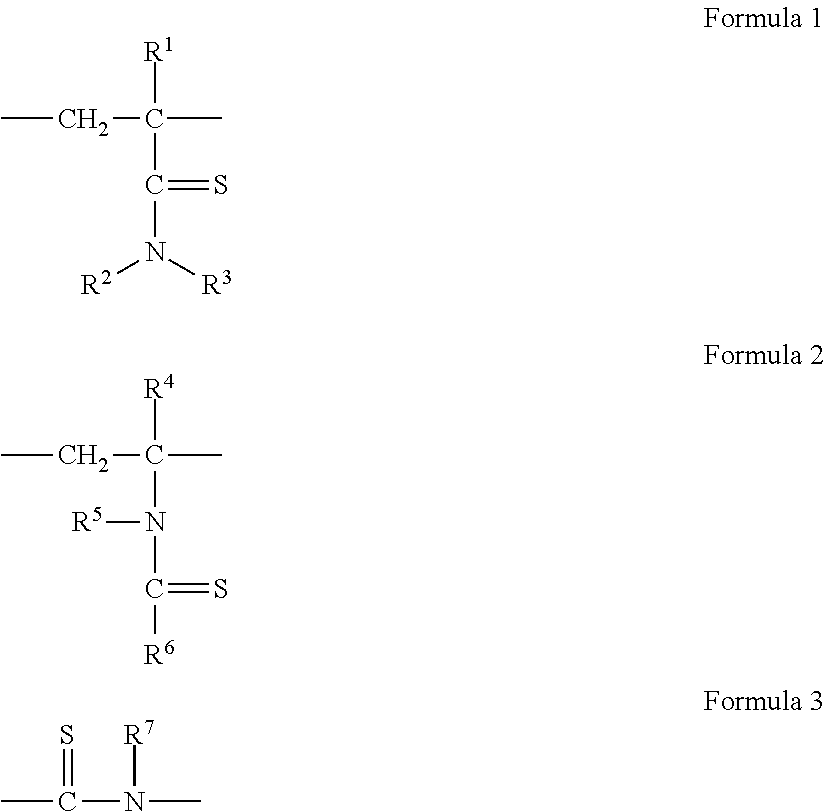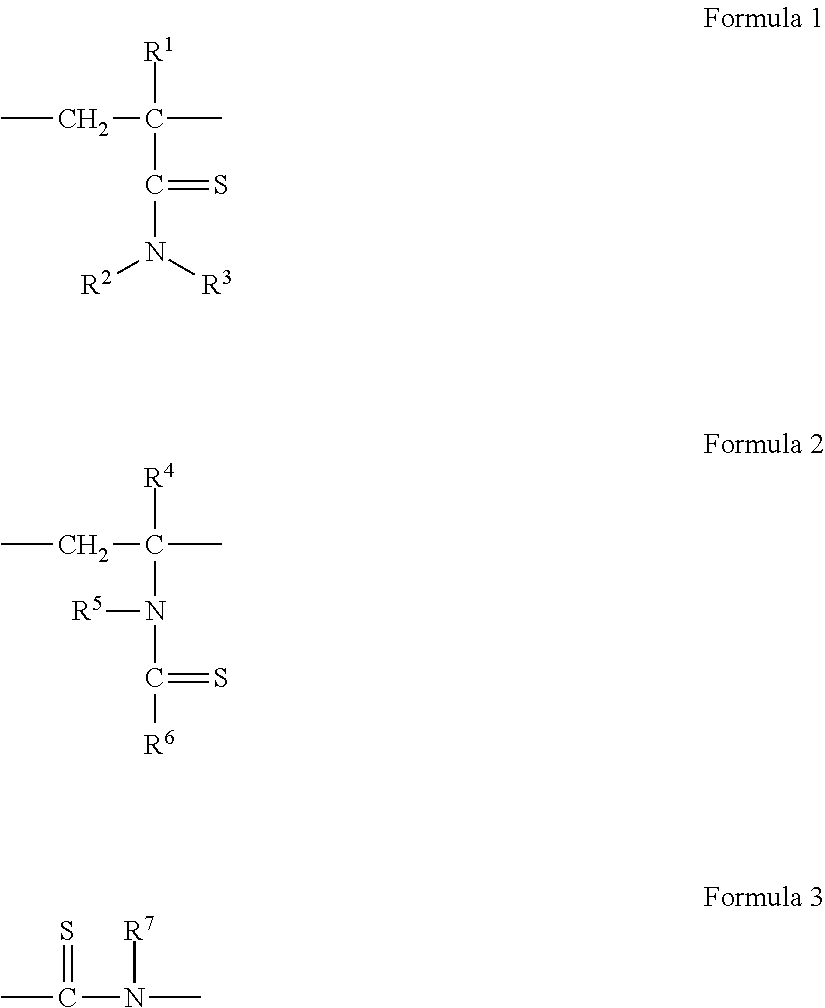Hydrogen Sulfide Generating Polymers
a technology of hydrogen sulfide and polymer, which is applied in the field of hydrogen sulfide (h2s) generating polymers, can solve the problems of no treatment, co and no treatment can be less than beneficial to recipients, and have been known for decades to be poisonous in excess, and achieve the effect of promoting vasodilation
- Summary
- Abstract
- Description
- Claims
- Application Information
AI Technical Summary
Benefits of technology
Problems solved by technology
Method used
Image
Examples
example 1
Copolymerization of Hexyl Methacrylate / Methacrylamide
9.0 g Hexyl methacrylate, 1.0 g methacrylamide, 80 mg. AIBN, 20 g dioxane, and a stir bar were charged into a 60 mL glass bottle, sealed, and purged with Nitrogen for 30 min. This was put into a 60 degree C. oil bath for 3 hr. The solution was slightly hazy before and after heating, with a small amount of undissolved material at completion. The polymer was precipitated into about 300 mL MeOH, and re-dissolved in about 10 mL DCM. The next two precipitations were done into about 150 mL MeOH, and finally it was dissolved in DCM, and dried on a Teflon sheet. This was first air dried, then put under high vacuum at 40 degrees C. overnight. After drying there was approx. 4 g clear, colorless polymer. The polymer has a glass transition temperature of 29.7° C. and a Mn of 163,589.
example 2
Preparation of C19 Polymer
C19 is a terpolymer of vinyl acetate, hexyl methacrylate and N-vinylpyrrolidone in the molar ratio of 5:77:18. Its synthesis is describe at least in U.S. Patent Publication 2005 / 0084515 A1, the contents of which are incorporated by reference herein in its entirety
example 3
Thiation of C19 Polymer with Lawesson's Reagent
1.0 g terpolymer of vinyl pyrrolidinone, hexyl methacrylate and vinyl acetate (C19 polymer) was dissolved in 10 mL toluene. 0.58 g Lawesson's reagent was quickly weighed out, and added to the solution, along with a stir bar. The bottle was sealed, purged with nitrogen for 30 min and put into a 100 degree C. oil bath overnight. Gradually the Lawesson's reagent mostly dissolved to give a clear, yellow solution, with some insolubles remaining. The reaction solution was filtered through a 1.0 micrometer syringe filter, to give a clear, yellow solution. Then, it was precipitated into about 100 mL MeOH, and the polymer dissolved in about 3 mL DCM. Four more precipitations were done into about 35 mL MeOH, and finally it was dissolved in DCM and dried on a Teflon sheet. This was first air dried, then put under high vacuum at 45 degrees C. overnight. After drying, there was approximately 0.6 g slightly opaque, yellow polymer. The glass temperatu...
PUM
 Login to View More
Login to View More Abstract
Description
Claims
Application Information
 Login to View More
Login to View More - R&D
- Intellectual Property
- Life Sciences
- Materials
- Tech Scout
- Unparalleled Data Quality
- Higher Quality Content
- 60% Fewer Hallucinations
Browse by: Latest US Patents, China's latest patents, Technical Efficacy Thesaurus, Application Domain, Technology Topic, Popular Technical Reports.
© 2025 PatSnap. All rights reserved.Legal|Privacy policy|Modern Slavery Act Transparency Statement|Sitemap|About US| Contact US: help@patsnap.com



